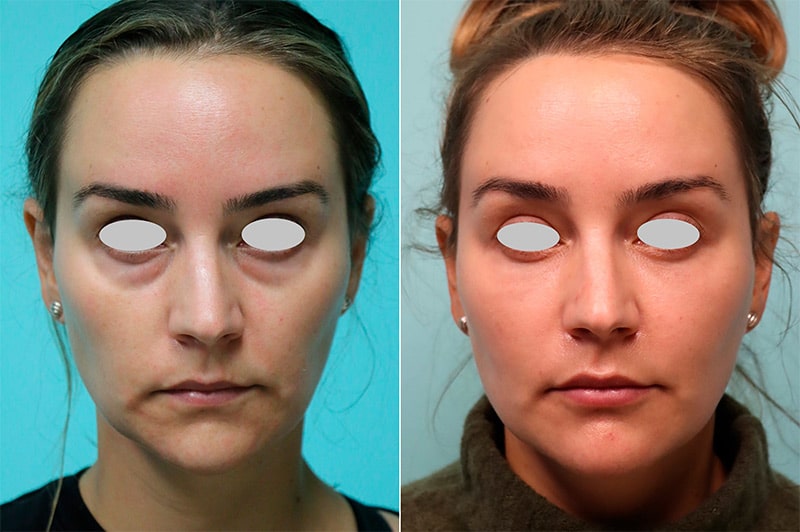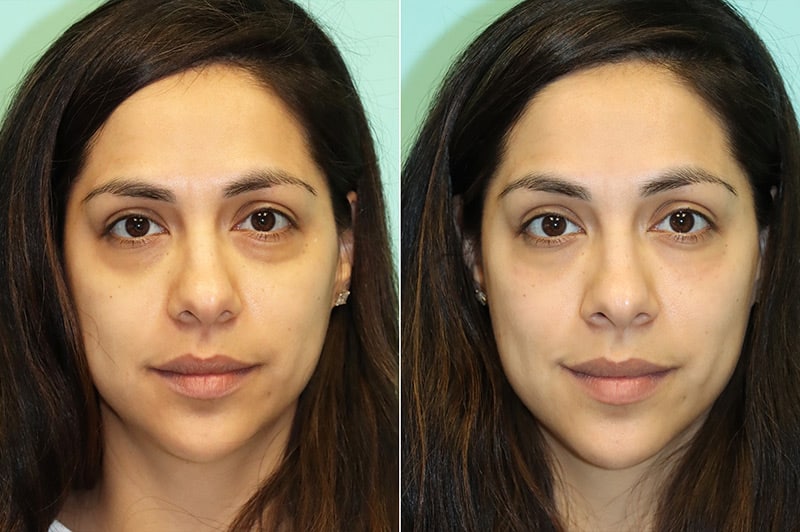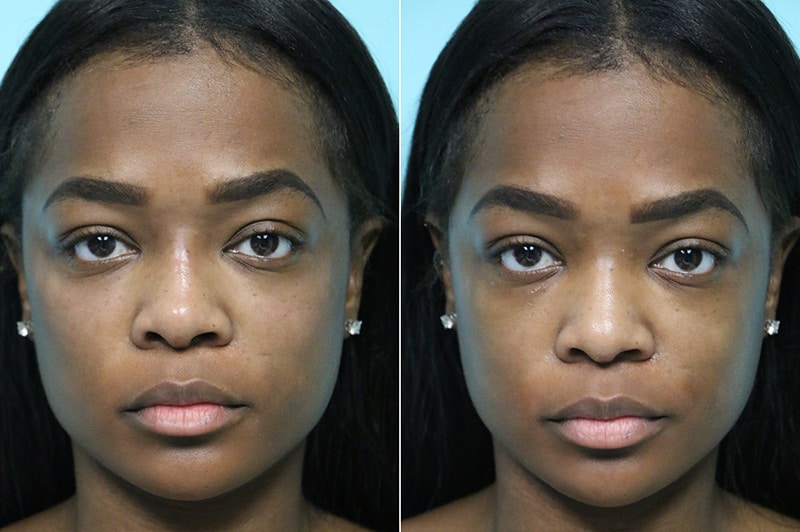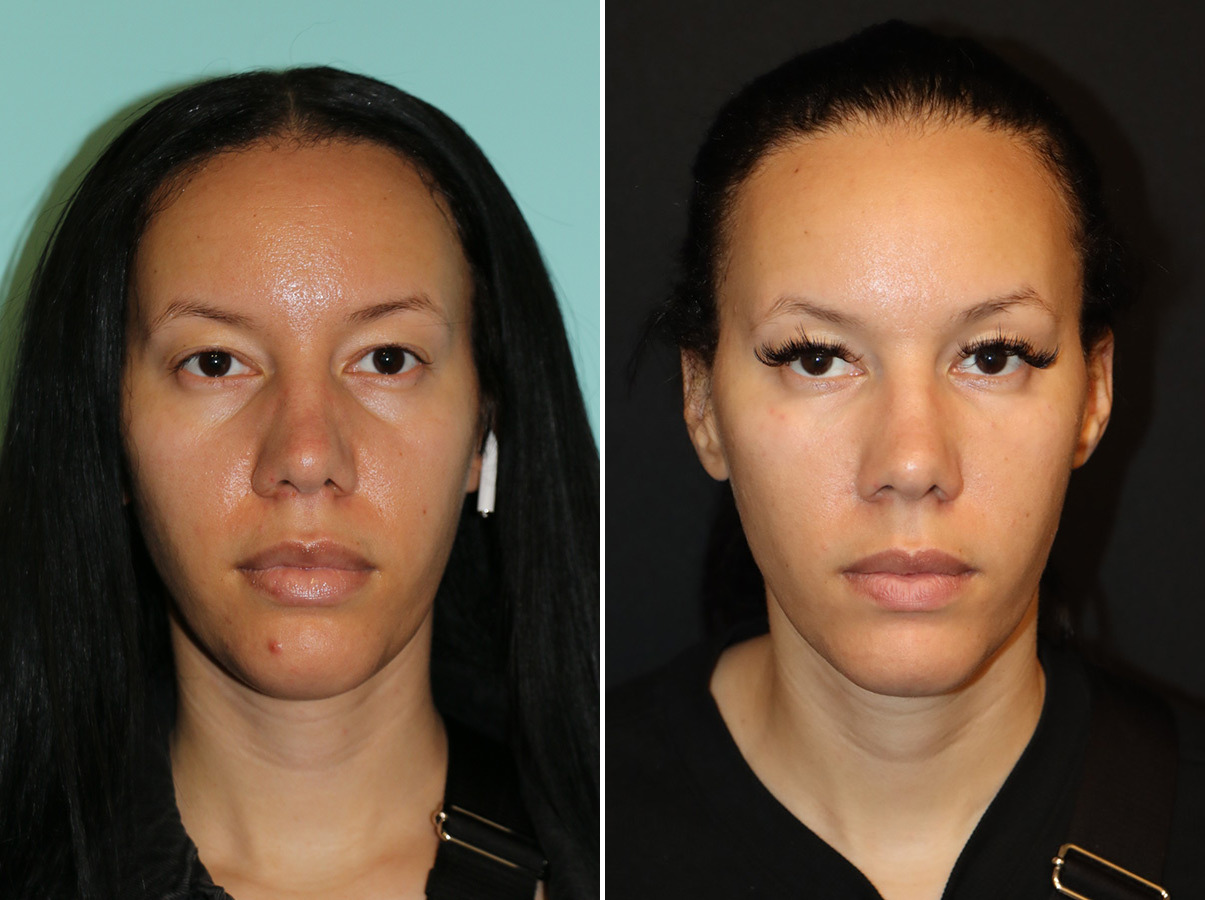Tear Trough Correction in Virginia, Washington D.C. and Maryland.
Hollows beneath your eyes can leave you looking less refreshed. At The Naderi Center in Virginia, our highly trained providers perform Tear Trough Correction to restore volume and balance. The result is smoother contours and a naturally revitalized appearance.
Embark on a journey of aesthetic excellence with The Naderi Center. Experience unparalleled artistry and precision for transformative beauty.
Tear Trough Correction Benefits
Youthful Radiance
This treatment significantly reduces under-eye hollows, granting you the glow of youth without extensive procedures.
Minimal Downtime
Experience the transformation in no time, making it perfect for those with a busy schedule.
Boosted Confidence
Looking good translates to feeling good, and this correction uplifts your self-esteem, letting your inner confidence shine.
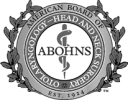

What is Tear Trough Correction?
Tear trough, otherwise known as the nasojugal groove, is the inner portion of the lower eyelid. As we age, there is a natural decrease in fatty tissue under the lower eyelid and upper cheek area. The skin and muscles of the lower lid slowly lose elasticity and no longer remain tightly secured in place. These changes can eventually cause the tear trough depression to become puffy or bulge away from the face. When the tissue under the eye pushes outward, “bags” begin to develop.
The unevenness of the area can become shadowy, which in turn will look like “dark circles” under the eyes. No matter how much makeup is worn, the face can still look exhausted and unhealthy. Tear trough rejuvenation or correction with dermal fillers is a popular with both men and women who want to look more rested youthful and refreshed.

Expected Results after Tear Trough Injections
- Decreased hollowness underneath the eyes
- Diminished appearance of under eye “dark circles”
- Reduced appearance of under swelling or “bags”
- Overall more awake, refreshed and rested appearance
Ideal Candidates for Tear Trough Injections
Good Candidates for Tear Trough Injections
- Have mild to moderate hollowness underneath the eyes. Patients with more severe hollowness may be candidates for lower blepharoplasty (eyelid surgery).
- Desire to decrease the appearance of under eye dark circles.
- Are consistently being told by friends and family that their eyes appear “tired” or asked if they “got enough sleep”.
- Are not on any medications that affect bleeding.
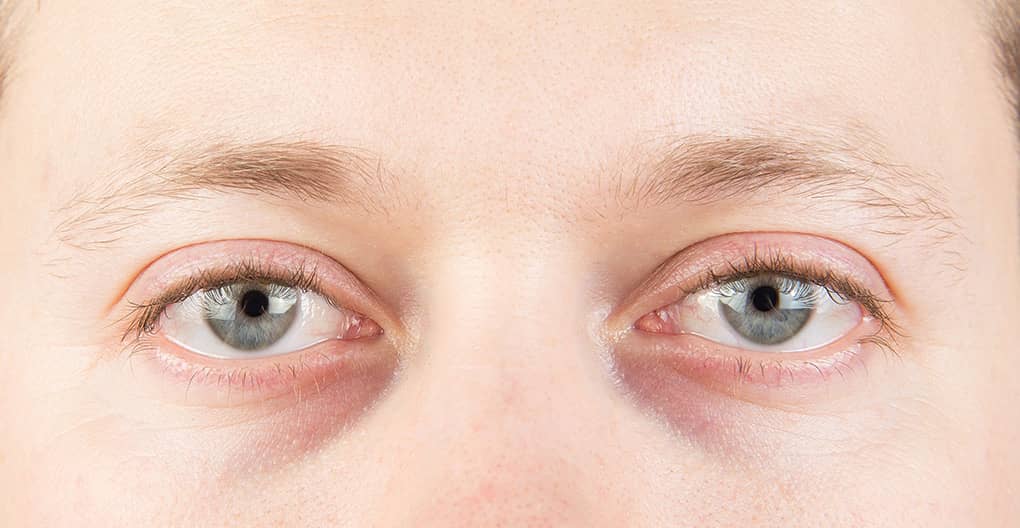
When is surgery a better option for tear trough correction?
Sometimes, patients can enjoy greater benefits from undergoing a surgical procedure. This is particularly true if their lower eyelids or lower eyelid muscles have too much laxity or looseness or they have larger lower eyelid bags or festoons, which are pouches of tissue in the cheek area right below the lower eyelid.
Tear Trough Injection Technique
The depressions between the lower eyelid and upper cheek are known as tear troughs. They extend outwards and downwards towards the cheek. Aging causes tear troughs to become deeper, longer, and more shadowed. Finely placing tiny and well dispersed amount of hyaluronic acid filler in the tear trough region helps to smoothen the appearance of the under eyes and refresh the overall appearance of the face.
Best Types of Dermal Fillers Used for Tear Trough Correction
The type of hyaluronic acid (HA) dermal filler selected for tear trough injection is based on a number of factors that include skin type, anatomical concern, skin texture, and thickness. The most commonly preferred dermal fillers at The Naderi Center include Restylane-L and Juvederm Volbella.

Restylane-L
Restylane-L is a FDA approved hyaluronic acid filler that uses the patented NASH technology to produce a smooth gel through the cross-linking of hyaluronic acid molecules. Restylane-L has a more fluid and spreadable consistency, making it ideal for the tear trough region.

Juvederm Volbella
Juvederm Volbella is made using Juvederm’s proprietary Vycross™ technology, that gives it an ultra-creamy texture that injects smoothly, delivering natural results. Juvederm Volbella absorbs less surrounding tissue volume than traditional fillers allows for better tear trough results with less chance for under eye swelling.
Sharp needle vs. cannula technique for tear trough injection
A cannula is a hollow bore needle that has a more rounded blunt end which penetrates the skin. Many medical providers prefer to use cannulas for their injections because of a decrease risk of the blunt needle entering a small blood vessel during the injection. During filler injections avoiding blood vessels means less bruising and bleeding for the patient, and decrease the chance that filler is physically injected into a vessel. Injection of dermal filler into a vessel can result in complications such as skin necrosis and in severe cases with tear trough injections, blindness. Cannulas also allow for an injector to deposit filler without as many needle “pokes” in the skin.
The benefits of cannula method for filler injection include
- Decreased risk of bruising and bleeding
- Less pain with injections due to decreased needle sticks
- Reduced incidence of vascular occlusion causing tissue death
- Reduced downtime and recovery due to less bruising and swelling
Given the safety profile of cannula technique it would appear obvious that all filler injections should be performed with cannula needles. The reality is that the traditional sharp needle method of injection will always allow for better placement of smaller amounts of dermal filler. Areas where a very small amount of filler is needed to create the desired effect would not be suited for cannula technique. For example filling in acne scars or fine lines, touchup injections, small area injections such as creating a “cupid’s bow” on the upper lip would be better suited with cannula technique. Highly skilled injectors often times prefer the sharp needle method in order to do the advanced micro-droplet technique. Sharp needle technique with micro-droplet delivery of filler will always have the most precise and accurate placement of dermal filler and is the preferred method at The Naderi Center.
Types of Tear Trough Corrections
Dark Circle Improvement
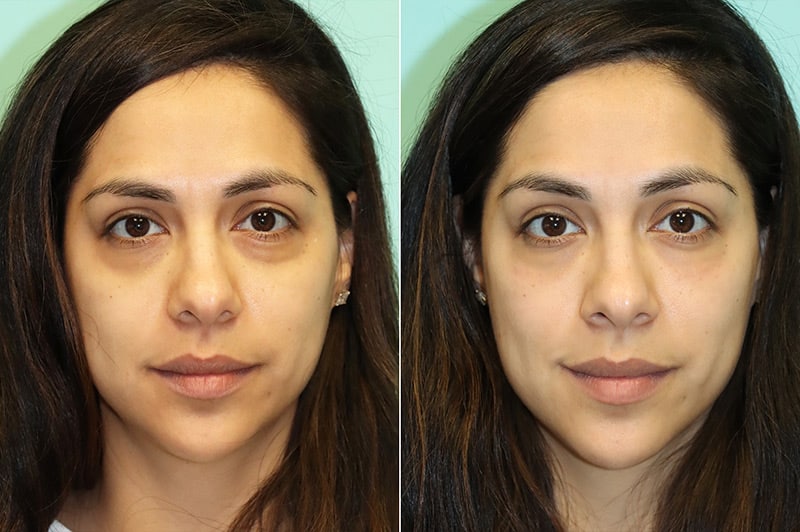
Depressions under the eyes
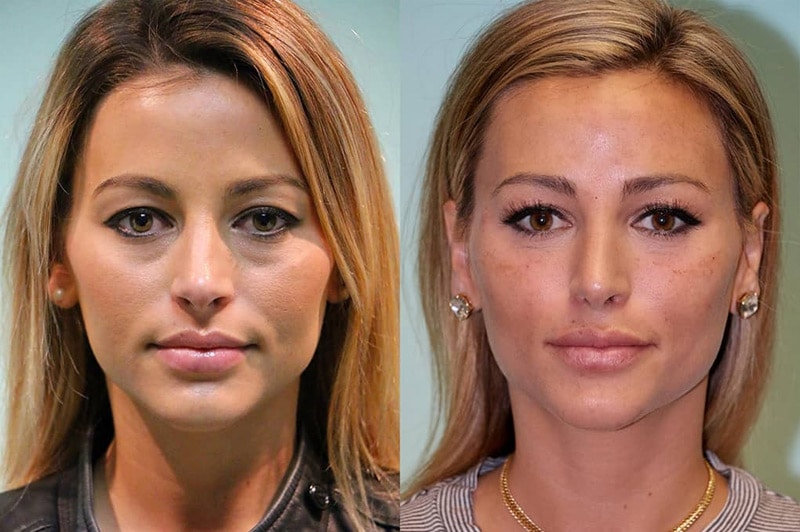
Diminished under eye “bags”

Testimonial
“Dr. Naderi is very professional, I liked the results of my tear trough injection, they were very natural which is what I wanted. I’ll be coming there more often for lips and cheeks. Highly recommended!!”
Patient
Pricing for Tear Trough Injections
Preparing for Tear Trough Injections
Proper preparation is important when it comes to minimizing recovery and increasing safety of dermal filler injections. Prior to your appointment it is important to be off of certain supplements and medications as well as to minimize consumption of certain foods that are high in Omega-3 and Omega-6. All of our patients are advised to view our list of “Things to Avoid” prior to injections or surgery.
2 Weeks Before Tear Trough Injections
Follow our dietary restrictions
For 2 weeks before your appointment avoid nuts, seeds, fish, fish oil, NSAIDs, supplements, and anything that prolongs bleeding. This will significantly help minimize bruising, bleeding, and swelling after your injections.
Arnica Supplements
You can start Arnica supplements a week prior to injection to help with post injection bruises. Arnica helps to speed up the fading away of bruises. Arnica supplements can be found in most health supplement isles at your local Whole Foods, GMC or CVS, as well as purchased from The Naderi Center.
Stopping Medications and Supplements
Talk to your primary care doctor or physician specialist. If you are on blood thinners you may need to stop these a few days to weeks prior to your injection treatment. Speak to your prescribing physician regarding if it is safe to stop these medications as well as to obtain instructions about when to stop and restart the medication. We do not recommend patients that are on life saving medications stop their medications in order to have any cosmetic procedures performed.
Prevention of Cold Stores
Patients prone to cold sores will need to start a prophylaxis dose of an anti-viral medication prior to their injection treatment. Your physician provider will prescribe this medication prior to your treatment.
Familiarize yourself with Risks and Benefits
Read our filler consent prior to your visit to familiarize yourself with risks and benefits of filler injections.
Day of Tear Trough Injections
Eat and drink before your treatment
It is not uncommon for patients to “pass-out” or get “vasovagal” during their injection. Most people are not fond of needles. Having a good blood sugar and being hydrated will make it less likely that you will feel queasy during your treatment.
Minimize make up and lotions
Please minimize make-up, especially in and around areas where you would like to get injections performed. Our medical assistants will have to remove your make-up prior to the procedure. You can bring make up with you and apply it immediately after your treatment.
Come in 30 minutes prior to appointment time for numbing
We recommend numbing crème application prior to dermal filler injections. The numbing cream needs a good 20 – 30 minutes to exert its full effect, hence we ask all our filler injection patients to come a little earlier to allow for the numbing time.
Reserve your next appointment
We love our loyal patients, and making sure that we can see you when you need your next injection is important to us. Most of our physicians book out 3 – 4 months and we prefer to never double book patients. We always recommend that you schedule your next appointment before leaving.
Recovery after Tear Trough Correction
After your filler injection, it is normal to have some swelling, pinpoint bleeding, and bruising. If numbing cream was applied for your procedure you will still feel numb for another 1-2 hours after your procedure. Please be sure to follow our post procedure instructions in order to minimize swelling, bruising, and decrease downtime.
Ice, Ice, Ice
Use a small bag of frozen peas in a sandwich bag or crushed ice to gently ice the area. No heavy ice bags. Ice for 20 minutes on and 20 minutes off. Continue the icing for 48 hours if possible.
Minimize Strenuous Exercise
We recommend no strenuous exercise for 48 hours in order to reduce swelling and bruising.
Do not manipulate or massage or rub or poke the area
Unless specifically advised by your physician, do not massage or manipulate your face. For one week avoid facials or rough scrubbing of the face. You can wash your face gently.
Use make-up and concealer to cover up bruises
You can use makeup and concealer the day of your injections to cover up any bruising.
Take Arnica supplements
Arnica supplements can quickly help reduce appearance of bruises.
Eat pineapples and drink pineapple juice
Pineapples have an natural anti-inflammatory properties to them that help to minimize swelling after injections.
Do not over-evaluate your face the first two weeks
The first two weeks after injections it is normal to have bruises, swelling, and be asymmetric. We recommend waiting two weeks for swelling and bruising to be completely gone before you can appreciate your final results.
Take Tylenol for Pain
It is normal to experience some pain and sensitivity in the area of the injection. Most patients find that Tylenol can help relieve this post-injection pain. Avoid NSAIDs such as Motrin and ibuprofen as these can make swelling and bruising worse.
How long will my tear trough injections last?
Hyaluronic acid filler molecules can last up to 18 months in certain areas of the face. However the visible effects of the fillers, to the naked eye, can last a shorter period. HA fillers last a shorter time in more dynamic and mobile areas such as lips but last longer in less mobile areas such as the lower eyelid, tear troughs, or the nose.
“FULL CORRECTION” is an important concept in longevity of the filler results. Full correction refers to fully correcting the problem with the necessary amount of filler. For example, if your doctor feels two syringes of filler would achieve full correction and you opt to have one syringe done, then the results will be shorter lived and you will need more frequent injections.
– Dr. Shervin Nader, Founder of The Naderi Center for Plastic Surgery and Dermatology
Risks, Safety, and Potential Complications of Tear Trough Injections
Common and expected side effects of tear trough injections include the following:
Bruising After Tear Trough Injections
- May last 1-2 weeks but bad bruises can last up to 4 weeks. This is normal. Bruises can show up several days after the treatment.
- Bruising can be covered with a full coverage concealer such as Neostrata, which we sell in the office, or Cover Fx brand from Sephora.
- Tear troughs and lips are more likely to bruise because these areas are more vascular than other parts of the face. Tear trough bruising takes longer than other regions of the face to fade, however, it is an easy region to cover up with concealer.
Swelling After Tear Trough Injections
- May not always be even from side to side depending on pre-existing facial asymmetry and volume of injection and bleeding at each injection site.
- Initial swelling takes 2 weeks to settle.
- Sleeping propped up and icing can minimize this side effect.
- Avoid exercise first 48 hours or longer as swelling increases when working out.
- Do not manipulate or massage area as this can aggravate swelling.
Asymmetry After Tear Trough Injections
- Asymmetry can be related to swelling. Wait 2 weeks before deciding whether asymmetry is from filler differences or swelling.
- Please keep in mind that once you start to analyze your face it is not rare to start to “notice” new asymmetries that have been there your entire life.
Lumps And Bumps After Tear Trough Injections
- The filler is going to feel firmer than your own tissue. Do not massage or manipulate the area.
- The feeling of lumps and bumps usually improves within 2 weeks as swelling resolves.
Subtle Results After Tear Trough Injections
- 1 syringe of filler is the equivalent of 1/5th of a teaspoon in volume. After swelling subsides there may be a need for additional filler injections if you desire increased volume.
- Our doctors are very conservative and do not over inject patients. Our physicians prefer to add volume slowly with time to achieve the desired look.
- The first time getting injections the results tend to go away faster. With repeat treatments results last longer as you build your own collagen around the injection sites.
Possible Complications After Tear Trough Injections
- Hypersensitivity or allergic reactions
- Cold sore or herpes simplex virus outbreak
- Acne breakout
- Skin necrosis
- Intra-vascular injection leading to skin necrosis and even blindness
- Sterile abscess
Please notify our office immediately if you feel that you may be experiencing any of the above possible complications after your filler injections.
RealSelf Most Loved Injector Awards: 2017 Winners Announced, according to patients
Tear Trough Injection Specialists at The Naderi Center for Plastic Surgery and Dermatology
Dr. Naderi is a board certified facial plastic surgeon and a National Clinical Trainer for Allergan and Medicis. He teaches other doctors how to inject Juvederm, Restylane, and Perlane properly. Other doctors from all over the world refer to Dr. Naderi’s instructional videos on YouTube to fine tune and improve their own filler injection techniques.
Dr. Kulak is a facial plastic surgeon with a gentle and artistic, female touch. Her patient’s love her nearly-pain-free techniques. She focuses on facial rejuvenation with advanced minimally invasive techniques as well as more invasive face lift and eyelid lift surgeries.
Dr. Alexandra Snodgrass is a board certified dermatologist who trained with Dr. Shervin Naderi prior to joining The Naderi Center. Dr. Snodgrass is expert on a variety of filler types and injection area techniques. Dr. Snodgrass’s dermal filler injections create a noticeable yet natural rejuvenation of the face.
Specialization Matters!SM
Dr. Shervin Naderi was just named part of the “Top 25 Injectors” by the 10 million member community of RealSelf. Out of 2000 nominees, Dr. Naderi was chosen as Top 25! This is a huge honor being recognized by the national and international community of RealSelf, the most trusted and authoritative site for all unbiased plastic surgery research.
Dr. Naderi is one of only 4 winners in the South East region of the United States. Patients regularly fly and drive to The Naderi Center from all over the country for his unique style of Botox and filler injections. Doctors all over the world who regularly use his online tutorial videos to learn and enhance their own technique have always respected Dr. Naderi’s injection skills.
Contact us to schedule a consultation for tear trough correction with one of our specialists at The Naderi Center. We are located in the greater Washington DC area with two locations, Chevy Chase, Maryland, 301-222-2020 or Reston, Virginia, 703-481-0002. For out of town patients we offer virtual consultation prior to your visit which can be arranged by filling out our contact us form.
Tear Trough Correction FAQs
Who performs under-eye (tear trough) filler at The Naderi Center?
How much does tear trough correction treatment cost?
The cost of tear trough correction treatment varies based on the type and amount of filler used, the expertise of the provider, and the geographic location of the clinic. At The Naderi Center, prices are competitive and reflect the high level of skill and quality provided.
How long does the tear trough correction treatment last?
The effects of tear trough correction treatment can last anywhere from 6 to 18 months, depending on the type of filler used and individual patient factors. Maintenance treatments are recommended to sustain the results.
What types of dermal fillers are used for tear trough correction?
Commonly used dermal fillers for tear trough correction at The Naderi Center include Restylane-L and Juvederm Volbella. These fillers are chosen for their smooth consistency and natural-looking results.
How is the recovery process after tear trough correction treatment?
Recovery from tear trough correction treatment typically involves minimal downtime. Patients may experience some swelling, bruising, and redness, which usually subside within a few days. Following post-procedure care instructions is crucial for optimal recovery.
How much filler is needed for tear trough correction?
The amount of filler needed for tear trough correction varies based on the individual's anatomy and the severity of the hollows. Typically, 1-2 syringes of filler are used per treatment session to achieve the desired results.
Is tear trough correction treatment painful?
Most patients experience minimal discomfort during tear trough correction treatment. A topical numbing cream is applied before the procedure to reduce pain, and some fillers contain lidocaine to enhance comfort during injection.
How does tear trough correction improve facial appearance?
Tear trough correction significantly enhances facial appearance by reducing under-eye hollows, dark circles, and bags, resulting in a more youthful, refreshed, and awake look. This treatment can greatly improve overall facial aesthetics.
How soon can I see results from tear trough correction treatment?
Results from tear trough correction treatment are typically visible immediately after the procedure. However, optimal results are seen after any initial swelling and bruising subside, usually within a week.
Can tear trough correction be combined with other facial treatments?
Yes, tear trough correction can be combined with other facial treatments, such as Botox or additional filler injections, to achieve a comprehensive rejuvenation of the face. Consult with your provider to create a customized treatment plan.
What should I avoid before and after tear trough correction treatment?
Before and after tear trough correction treatment, patients should avoid certain medications and supplements that can increase bleeding and bruising, such as NSAIDs, fish oil, and vitamin E. Following specific pre- and post-treatment guidelines provided by your provider is essential for minimizing side effects and ensuring the best results.
What tear trough correction office is near me?
If you live in the states of Virginia or Maryland, The Naderi Center for Plastic Surgery and Dermatology offers tear trough correction among its services. For a full list of services, please visit our Locations page.
